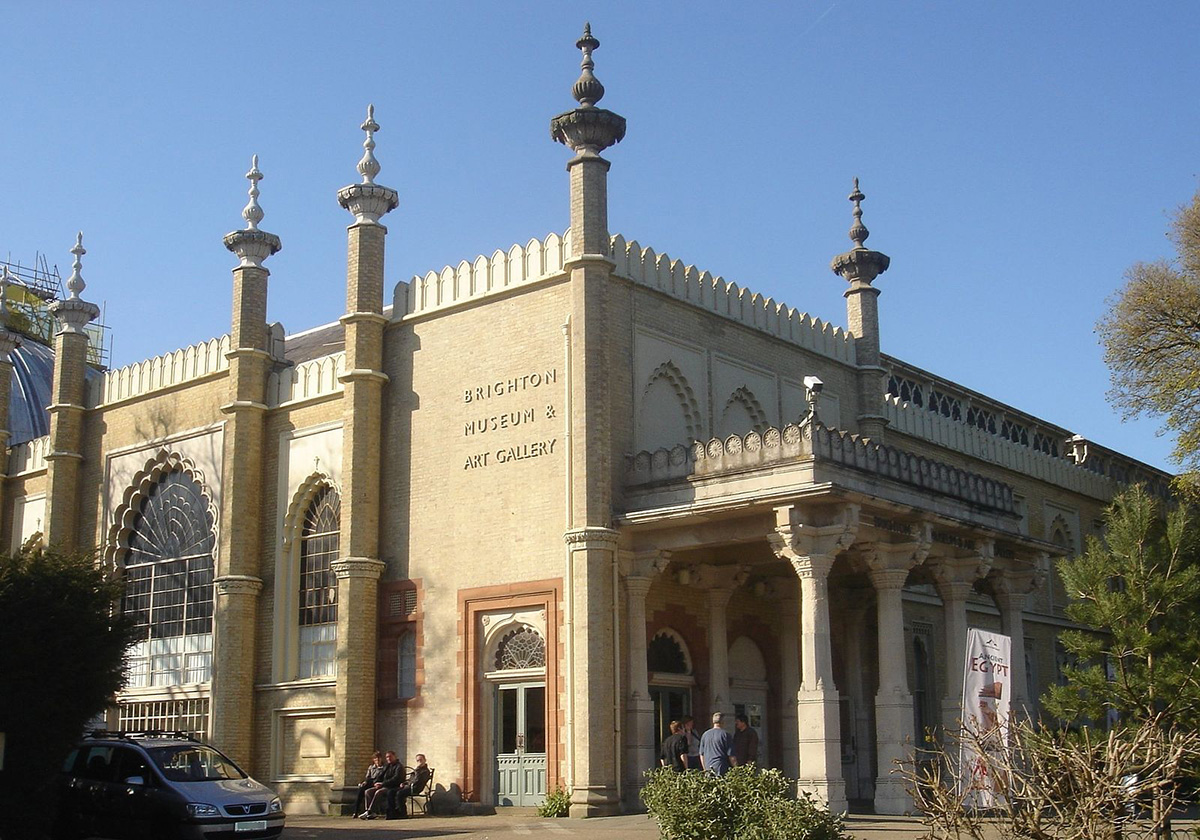London Group Archivist David Redfern LG looks back to a Brighton exhibition which set the tone for future London Group collaboration.

Before The London Group’s first exhibition in 1914 the artists involved in discussing the formation of the new group had an opportunity to see how it might work out, a “dry run” so as to speak. An invitation in 1913 from Henry D. Roberts, Director of Brighton Art Gallery, to the Camden Town Group provided an opportunity to collaborate with other groups and independent artists towards the formation of what was to eventually be called The London Group. Roberts wrote in the foreword to the Brighton exhibition, which was held between December 16th 1913 and January 14th 1914, “It has been somewhat difficult to find a title to this exhibition. That given to it – ‘Work of English Post-Impressionist and Cubists’ – is hardly sufficiently explanatory, as there are many works exhibited which do not come under either of these titles.” Confidence in this new grouping was somewhat shakey as later in his foreword Roberts writes, “Mr J.B. Manson and Mr Percy Wyndham Lewis have been good enough to write an introduction to the catalogue, but the Fine Arts Committee obviously are not responsible for the opinions therein stated”. And here we have it. Would the experimental collaboration between the Camden Town Group and the English Cubists (later called the Vorticists) hold together? The fact that loose canon Wyndham Lewis insisted that his English Cubists should be hung on their own in glorious isolation in Room 3 did not augur well for the future, as ultimately transpired. C.R.W. Nevinson, Edward Wadsworth, Jacob Epstein and David Bomberg were all selected by Wyndham Lewis to show in his “Cubist Room” and were described by him as forming a “vertiginous, but not exotic, island in the placid and respectable archipelago of English art.” He continues, “Post Impressionism is an insipid and pointless name invented by a journalist . . . All revolutionary painting today has in common the rigid reflections of steel and stone in the spirit of the artists; that desire for stability as though a machine were being built to fly or kill with; an alienation from the traditional photographer’s trade and realisation of the value of colour and form as such independently of what recognisable form it covers or encloses.”
Walter Sickert, Lucien Pissarro and most of The Camden Town Group were shown in Rooms 1 and 2. In the foreword to these rooms J.B. Manson writes, “Cubism meets Impressionism, Futurism and Sickertism join hands and are not ashamed, the motto of the Group being that sincerity of conviction has a right of expression. A live society in which is room for manifold schools of thought, in which individuality and personal feelings have a scope to develop is the object of the (sic) London Group. It is well, perhaps, that the vital qualities in modern art should be concentrated in one definite group, instead of being scattered in the medley on modern exhibitions.”
Notably, this exhibition is where we see Camden Town modernised to include women artists who had notoriously been barred from Camden Town group membership. At Brighton Ruth Doggett, Jessie Etchells, Fanny Eveleigh, Renée Finch, Sylvia Gosse, Anna Hudson, Stanislawa de Karlowska, Thérèse Lessore and Ethel Sands were brought into the mix. Many of these women artists went on to be loyal and prolific exhibitors with The London Group, Doggett showing 60 works in total in London Group exhibitions, Gosse 53, de Karlowska 144, Lessore 107 and Sands 54.
Wyndham Lewis only ever submitted a total of seven works in two London Group exhibitions, in 1914 and 1915, finally leaving The London Group to form his own ‘Group X’ and taking a number of London Group members with him. James Bolivar Manson took the minutes of the formative meetings from which The London Group emerged. He was a friend of Lucien Pissarro and Sickert but quickly became disillusioned with the new group, exhibiting only once in The London Group’s first exhibition in 1914. He went on to form his own Monarro Group with Pissarro, later being appointed Director of the Tate Gallery in 1930 and thereafter finding little time to paint. Let that be a lesson!
David Redfern LG, Nov 2020
